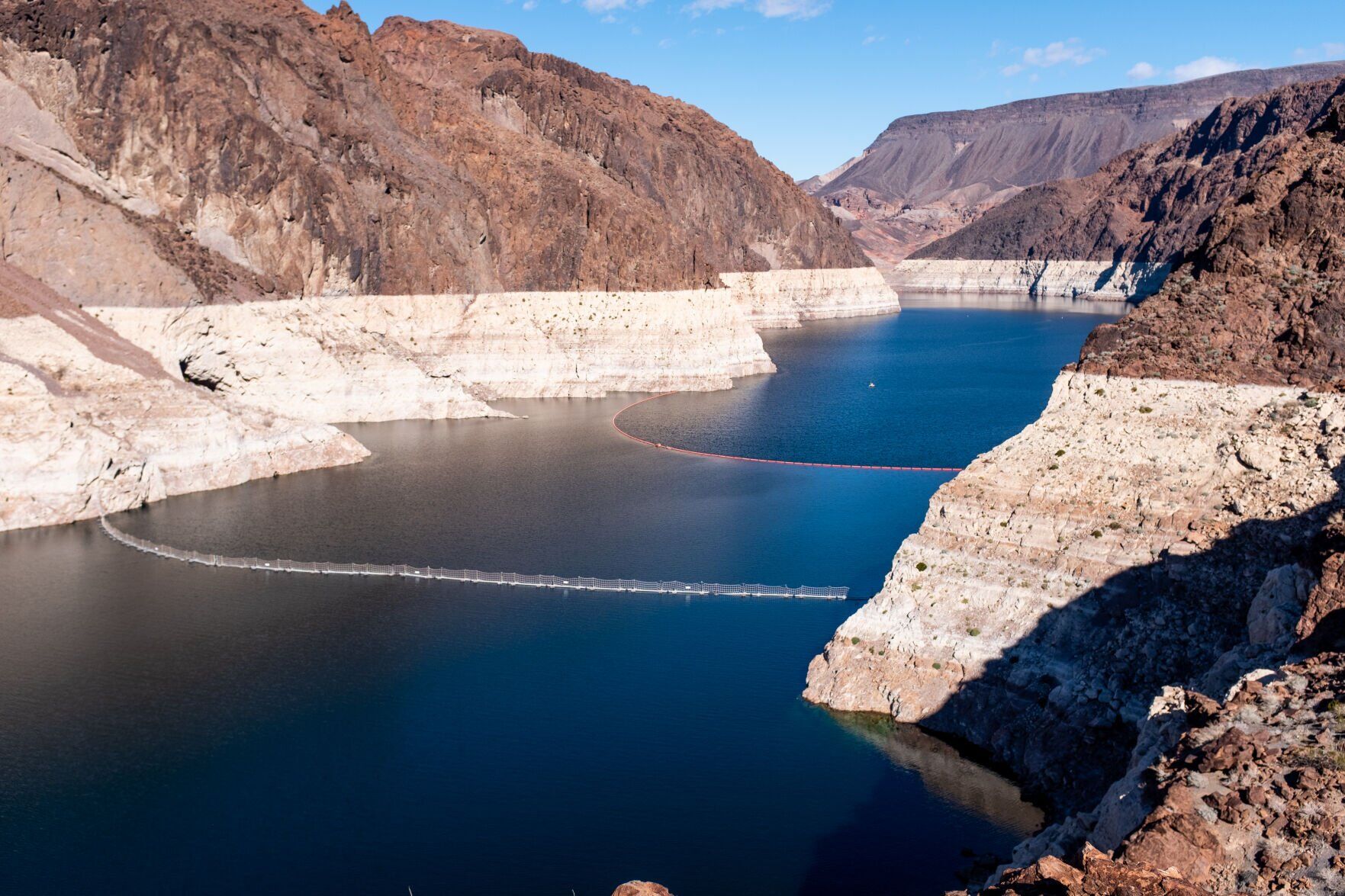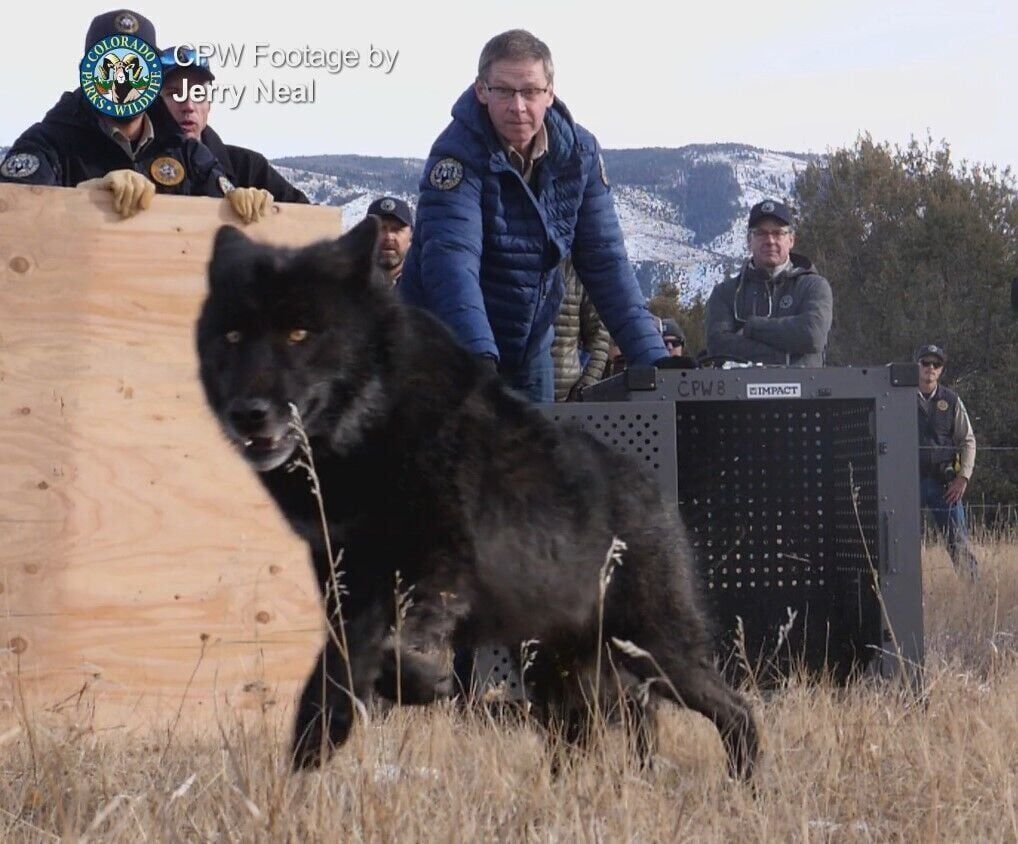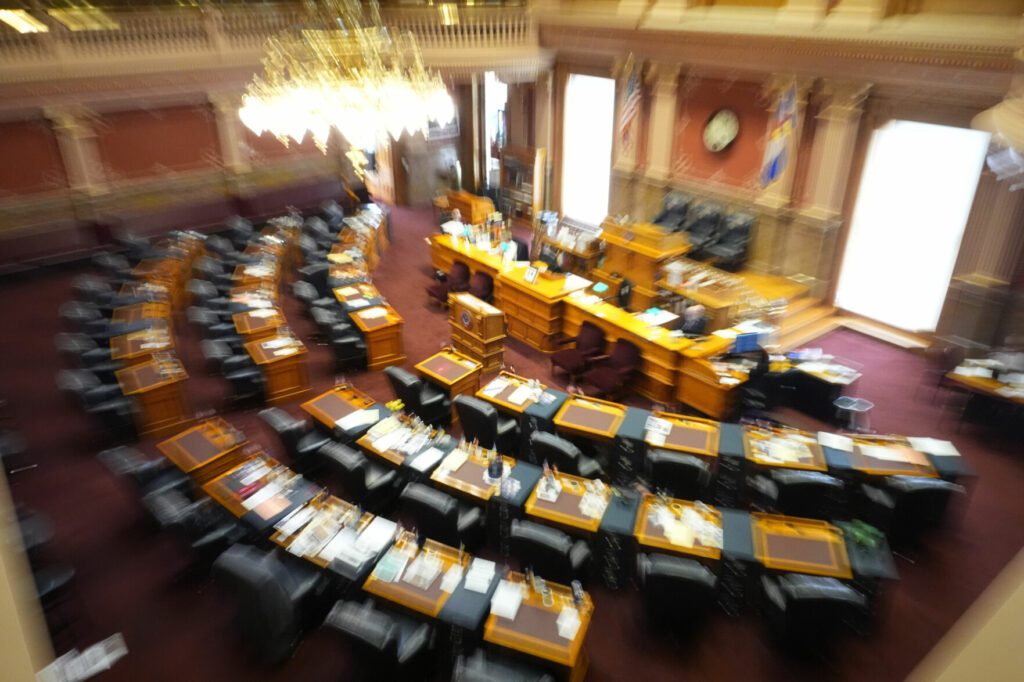Lower basin states reach agreement on water cuts from the Colorado River

After two missed deadlines, the third time appears to be the charm.
The Department of the Interior on Monday announced the three lower basin states on the Colorado River – California, Arizona and Nevada – have reached an agreement on cuts to their water allocations from the Colorado River that will last until 2026.
The cuts will total 3 million acre-feet of water. One acre-foot is about 326,000 gallons, or enough to supply two families of four for a year.
The Department of the Interior is withdrawing, for now, a draft Environmental Impact Statement that was intended to come up with an agreement among the seven states on the Colorado.
While the agreement announced Monday applies only to the three lower basin states, all seven states on the Colorado River are jointly submitting the agreement, according to the Department of the Interior.
The announcement said 2.3 million acre-feet “will be compensated through funding from the historic Inflation Reduction Act, which is supporting efforts to increase near-term water conservation, build long term system efficiency, and prevent the Colorado River System’s reservoirs from falling to critically low elevations that would threaten water deliveries and power production.”
The announcement: “Under this consensus proposal, the remaining system conservation needed for sustainable operation will be achieved through voluntary, uncompensated reductions by the Lower Basin states.”
The agreement has been a year in the making, but, at 3 million acre-feet, it is far less than what the Department of the Interior sought to shore up water levels at the nation’s two largest reservoirs, Lake Powell and Lake Mead.
The drive to conserve on the Colorado River is prompted by more than 20 years of mega-drought, in which the Colorado is no longer able to handle the demands to deliver water to the seven states’ 40 million people and keep agriculture, particularly in California, thriving.
Last June, Bureau of Reclamation Commissioner Camille Calimlim Touton told a U.S. Senate panel the seven states needed to come up with plan to conserve between 2 and 4 million acre-feet of water per year. At the high end, that total represents about 30% of the water that the Colorado sends to its seven states, 30 tribes, and three states in Mexico. In addition to the three lower basin states, the other four in the Upper Basin are Colorado, Wyoming, Utah and New Mexico.
Water levels at Lake Mead and Lake Powell have dropped to such low levels that it’s jeopardizing the ability of the dams on the two lakes – Hoover and Glen Canyon – to generate hydropower.
Touton’s announcement sent shock waves through the region, particularly given the 60-day timeline she set for an agreement, and her statement, that if the seven states did not act, the Bureau of Reclamation would.
But that agreement never materialized, and neither did the threat from Reclamation to impose its own ideas on water cuts.
Instead, Touton announced water cuts from previous agreements, which hit Arizona harder than the other states.
California, at 4.4 million acre-feet of water from the Colorado per year, has not only the largest allocation but also holds the most senior water rights, which it claimed would mean Arizona would face massive cuts first and California last. Nevada’s water from the Colorado is the smallest allocation, and targeted primarily for municipal use.
The cuts announced last August reduced Arizona’s allocation by 21% and Nevada’s by 8%. California was spared any cuts.
At the same time, the Upper Basin states announced a five-point plan that didn’t include any specific water reduction targets, claiming they had already cut back on their water consumption and their options for doing more were limited.
It was on to round two, with a Jan. 31, 2023 deadline.
Six of the seven states, minus California, came up with a plan to conserve 2 million acre-feet of water annually, which would include cuts to California’s allocation. But without California’s buy-in, the plan was a non-starter, because California could sue to protect its water rights.
Round three was a draft supplemental environmental impact statement from the Department of the Interior, which began last October. That draft SEIS would revise the current interim operating guidelines for the near-term operation of Glen Canyon and Hoover Dams, the department said.
“The alternatives presented in the draft SEIS analyze measures that may be taken under Secretary of the Interior Deb Haaland’s authorities to protect system operations in the face of unprecedented hydrologic conditions, while providing equitable water allocations to Lower Basin communities that rely on the Colorado River System,” an April 2023 announcement said.
But with Monday’s agreement, the SEIS is being withdrawn, at least temporarily so that the department can “fully analyze the effects of the proposal under the National Environmental Policy Act (NEPA).”
The department said the Bureau of Reclamation will then publish an updated draft SEIS for public comment “with the consensus-based proposal as an action alternative.” And, as a result, the original May 30, 2023 deadline for submitting comments on the draft SEIS also goes away and the department?plans to?finalize the SEIS process later this year, the department said.
Will the plan announced on Monday work? And more importantly, is it enough?
The above-average snowpack during the winter of 2022-23 has had an impact on the need for conservation measures, but the opportunity to do something more significant may have been missed, according to one expert.
Colorado water attorney James Eklund, formerly the head of the Colorado Water Conservation Board and formerly Colorado’s representative on the Upper Colorado River Commission, told Colorado Politics the optimism over the snowpack may be misplaced.
He also said the agreement announced Monday is a consequence of the Upper Basin pointing fingers, instead of participating in problem solving. That means, he said, that “the federal government is prioritizing Colorado River operations for the Lower Basin, with Lower Basin irrigators and other users on a clear path to voluntary, compensated and temporary water conservation at scale.”
“It’s nonsensical that some believe Lower Basin irrigators should have these tools and options, while Upper Basin irrigators are too ignorant and disorganized to wield them,” he added.
Gage Zobell, a water law expert and partner at the international law firm Dorsey & Whitney, said the agreement “between the United States and the Lower Basin States is historic, but likely a short-term fix to a long term issue.”
Zobell said long-term payments by the federal government for reductions in the usage is a stop-gap, not a solution.
“The positive of this agreement is that it shows the Lower Basin States will find ways to reduce usage when the proper legal incentives are in place; and the Upper Basin States will join into an agreement they find shows mutuality in reduction between all Colorado River states,” he said.
In a statement, U.S. Sen. John Hickenlooper of Colorado, who has been the driving force behind a bipartisan caucus of senators from the seven states that has met informally for the past year to discuss the crisis on the Colorado River, said a step “towards aligning Colorado River water use with the reality of our decreasing flows is a hopeful step towards avoiding catastrophe.”
“We look forward to seeing Reclamation’s analysis of the Lower Basin’s proposal, with hopes this provides a path to a seven-state agreement,” he said.
But the kumbaya moment among the seven states might be short-lived.
A statement from the Upper Colorado River Commission, said the upper basin states had not yet reviewed the proposal in detail, and notably, “cannot endorse the proposal at this time.”
That said, the UCRC commissioners “look forward to better understanding whether it can provide meaningful and enforceable reductions in use to address near-term challenges facing the Colorado River System.
Colorado’s representative, Becky Mitchell, pointed out that the 2022-23 above-average wet winter “has given us a bit of space to negotiate.”
“But we must not squander this gift from mother nature. We look forward to better understanding what enforceable, binding water conservation agreements the Lower Division States may be able to provide,” she said. “While temporary solutions are beneficial, we must continue to focus on the long-term goal of sustaining the system. We will analyze everything through the lens of how to best protect (all who are served by the Colorado River).”













